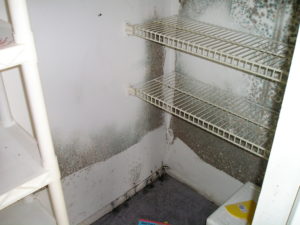Mold in Office buildings, schools, and other nonindustrial buildings can develop persistent dampness through a variety of mechanisms. These commonly include roof and window leaks, flooding events, condensation, plumbing leaks, and high indoor humidity. A wet foundation can also cause persistent dampness which can lead to mold.
Foundations can often become wet due to water run off from land that slopes toward the building, an inadequate gutter system that does not direct water away from the building, or a building site with a high water table. Problems with dampness in buildings can begin because of inadequate design of building components and poor construction work or improper storage of materials.
These and other causes can be prevented through careful attention to the design, construction, commissioning, operation, and maintenance of buildings. Prevention and control of building dampness will minimize the chance that occupants will develop respiratory symptoms and disease from exposures related to the dampness and mold. Prevention can also help avoid potentially costly mold remediation of moisture damage in buildings.
WARNING!
Occupants within damp office buildings, schools, and other nonindustrial buildings
may develop respiratory symptoms and disease.
The Institute of Medicine (IOM) concluded that there is an association between exposure to damp indoor environments and cough, wheeze, upper respiratory tract (nasal and throat) symptoms, and exacerbation of asthma. Also, the IOM concluded that there is an association between the presence of mold and bacteria in damp indoor environments and hypersensitivity pneumonitis [IOM 2004]. A statistical analysis of well-designed, published research studies estimated percentage increases in
health outcomes for subjects living in houses with dampness and mold compared to those living in houses without these conditions. Read More
Excert Source: DHHS (NIOSH) Publication No. 2013–102




